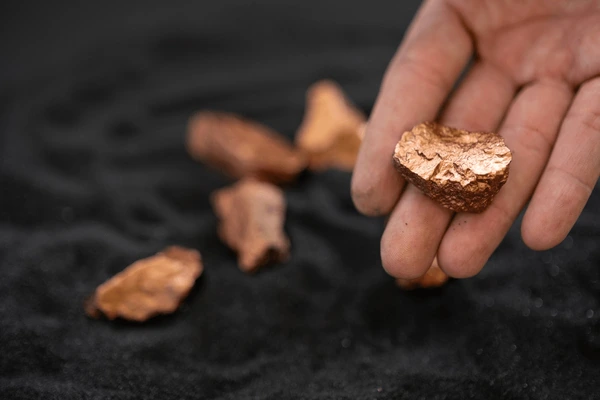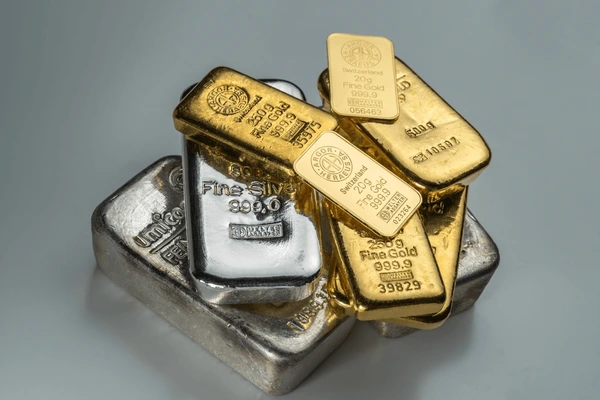Sayanava Sinha Roy
29.04.2025
How Gold Loan Valuation Works and What You Must Know?
Hello Reader!
Welcome to the blog page of Rahul Refinery, one of the best gold buyers.
Gold Loan valuation depends on purity, weight, and market price. Learn how it works and what borrowers must know before applying for a gold-backed loan.
Table of Contents
In today’s unpredictable economy, many people look to their most stable asset—gold—for financial security. Whether it’s for sudden medical expenses, education fees, or business capital, gold loans have become one of the fastest and most accessible financing options. But how does gold loan valuation actually work? What determines how much you can borrow? Understanding this process ensures you get the right value for your gold and make informed financial decisions.

Let’s break it all down from an expert lens, focusing on transparency, trust, and your financial well-being.
Understanding the Basics of Gold Loans
A gold loan is a type of secured loan where your gold ornaments or coins are pledged as collateral. Based on the quality and weight of the gold, lenders provide a loan amount—typically a percentage of the gold’s current market value.
What makes gold loans appealing:
- Quick approval and disbursement
- Minimal documentation
- No need for income proof
- Lower interest rates compared to unsecured loans
However, to unlock these benefits fully, one must understand valuation—the backbone of the entire process.
What Factors Affect Gold Loan Valuation?
Valuation is not a random estimate. It’s a methodical process influenced by several critical elements.
1. Purity of Gold (Karat Level)
The gold’s purity is the foremost factor. Measured in karats (K), 24K gold is the purest but often not used in jewellery due to its softness. Most gold jewellery in India is 22K or 18K.
Lenders typically do not offer loans on:
- Gold below 18K
- Gold with heavy stone or mixed-metal content
Higher purity = higher valuation = bigger loan amount.
2. Weight of the Gold
Only the actual gold content is considered—stones, gems, and alloyed metals are excluded. So, while your bangle may weigh 50 grams, if it contains 15 grams of stones, only 35 grams will be valued.
3. Current Market Price of Gold
Valuation is tied to the day’s market rate. Lenders often use the average of the past few days to ensure a fair value, reducing the effect of sudden price fluctuations.
4. Loan-to-Value (LTV) Ratio
As per RBI guidelines, the maximum LTV ratio allowed is 75%. That means for ₹1,00,000 worth of gold, the maximum loan you can get is ₹75,000. Some financial institutions may offer slightly less depending on risk policies.
5. Type of Product Pledged
Jewellery vs Coins:
- Coins (from banks or certified dealers) are easier to evaluate.
- Jewellery often includes design, polish, and non-gold elements which complicate valuation.
How is the Testing Done?
The testing and evaluation process is non-destructive and transparent, involving:
- Karimeter Testing: Measures exact purity using XRF technology.
- Weighing Scales: Highly accurate electronic scales ensure correct weight.
- Live Rate Integration: Software fetches real-time gold prices.
All of this is typically done in front of the customer, ensuring full transparency.

Step-by-Step Gold Loan Valuation Process
Here’s what generally happens when you walk in to avail a gold loan:
- Initial Document Verification
(ID proof, address proof) - Gold Inspection
- Cleaned and weighed
- Purity tested via Karimeter
- Loan Offer Given Based on Value
- Calculation: (Gold purity x net weight x LTV ratio)
- Calculation: (Gold purity x net weight x LTV ratio)
- Agreement Signing & Disbursement
- Loan terms are explained
- Amount is credited instantly via bank or cash
Focus on: Gold Loan Interest Rates and Tenure
Different lenders offer different plans:
- Interest Rates: Usually range from 7% to 15% per annum
- Tenure: Ranges from 3 to 24 months
- Repayment: Interest-only EMIs or bullet payments
Be sure to compare lenders, not just on the rate, but on processing fees, hidden charges, and foreclosure penalties.
Is Your Gold Safe?
Yes—when you choose a trusted gold buyer or loan provider. Here’s how your gold is secured:
- Stored in tamper-proof, CCTV-monitored vaults
- Fully insured against theft, fire, or natural damage
- Barcode tagging and sealed pouches to avoid tampering
Things You Must Know Before Taking a Gold Loan
Before you pledge your precious assets, be aware of these essentials:
- Always ask for a valuation slip
- Understand foreclosure charges
- Compare multiple lenders
- Read the fine print on interest compounding
- Keep track of your repayment schedule

Frequently Asked Questions (FAQs)
Q1: Can I take a gold loan on 14K jewellery?
Answer: Most lenders don’t accept gold below 18K purity for loan purposes.
Q2: What if I default on my gold loan repayment?
Answer: After the grace period, the lender may auction your gold to recover dues. You may lose your jewellery and also hurt your credit score.
Q3: Is my gold tested destructively?
Answer: No. Most modern methods use non-invasive, non-destructive testing with XRF machines.
Q4: Can I repay early without penalty?
Answer: Many lenders allow early repayment with minimal or no foreclosure charges—check this before signing.
Q5: How quickly is the loan disbursed?
Answer: Usually within 30–60 minutes, depending on documentation and internal checks.
When Choosing a Gold Loan, Trust Matters Most
When dealing with valuable gold assets, trust is everything. It’s not just about getting a loan—it’s about receiving the right valuation, assured security, and full transparency. That’s why choosing a provider who operates with integrity is essential. Many individuals prefer working with a reputable gold buyer, not just for better rates, but for their expertise in gold handling, non-destructive valuation methods, and ethical practices. This level of professionalism offers peace of mind, especially when your financial decisions are backed by precious assets.
Be Informed Before You Pledge
A gold loan can be an incredibly useful financial tool, but only when approached wisely. By understanding the key factors that influence valuation—purity, weight, market value, and lender policies—you empower yourself to make smart borrowing decisions.
Gold is more than just a decorative asset—it’s a powerful resource. And when the time comes to use it, knowing the process is your greatest protection.
Popular Post



